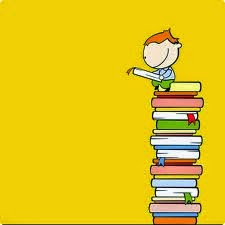In the first part of this two-part series, I looked at common, oft-repeated
stories based on scary, freaky and downright depressing rhymes
and tales from way back when.
This follow-up intends to give you some
alternatives, both local and international.
To begin
with, remember that there are no fixed rules to choosing a
good book for your child.
Any book your
child likes could be the right one. (I used to love to ‘yead’ birthday cake
cookbooks as a toddler!)
But books do fall into three basic levels:
1. those
the child can read alone,
2. those
the child can read with an adult, and
3. those
an adult must read to the child.
Here are some
basic things to look for as you help kids to choose ‘good books’:
Infants & Toddlers (birth to 2)
·
Books
with big, colourful pictures of familiar day-to-day objects
·
Durable books
made of cardboard, plastic or washable cloth
·
Books
that appeal to the senses, with fabric, textures or scents
·
Stories
told in short, simple sentences with pictures that explain
·
Poems and
rhymes that are enjoyable for parents to read aloud
Note: This last one is a biggie for me. That’s why I
love Doctor Seuss (the shorter ones, not the 80-page epics). Having said that,
even a non-rhyming story can be fun to read, like Julia Donaldson’s The Gruffalo, Monkey Puzzle or Tyrannosaurus
Drip.
Pre-Schoolers (aged 3 to 5)
·
Main
characters who are your child’s age or even slightly older
·
Illustrations
and photos that are clear, colourful and engaging
·
Simple,
fun plots that move quickly so the book can be read in one sitting
·
Lively
rhymes and repetition that children can repeat/remember
·
Stories,
about everyday life and events, that encourage questions
·
Stories
that review basic concepts: letters, numbers, shapes, colours
·
Playful
animals, real and imaginary, that hold a child’s attention
Note: Aged 3, my daughter is now returning to favourite
books from when she was a ‘baby’, because she’s seeing things in them she never
noticed before: details, jokes, aspects of her own life. They also seem to feel
to her like old, familiar friends.
Young Readers (aged 6 to 11)
·
Clear
text that is easy to read
·
Colourful,
attractive illustrations and photos that bring the text to life
·
Pictures
that give clues to the meaning of unfamiliar words
·
How-to,
craft and recipe books with simple instructions and illustrations
·
Books by authors/illustrators
who are already your child’s favourites
·
Books featuring
your child's favorite characters – from movies or TV
·
Chapter
books that can be read over a few days, not in only one sitting
Note: Yes, you should opt for books that appeal to your
child’s interests. But an interesting tip I picked up is to choose books that aren’t obvious choices for your child.
My little girl loves ballet, animals and birthday parties, but she likes reading
about diggers, cranes and dinosaurs. She also enjoys ‘reading’ non-fiction,
like the Guinness Book of World Records. And the Mr Price Home winter
catalogue.
And, just in case you’d like specifics,
below are some recommended book lists:
Award-winning SA books:
1. Ashraf of Africa – Ingrid Mennen & Niki Daly /
Nicolaas Maritz
2. Fly, Eagle, Fly! – Christopher Gregorowski / Niki
Daly
3. Fynbos Faeries – Antjie Krog (& Gus Ferguson) /
Fiona Moodie
4. Just Sisi – Wendy Hartmann / Joan Rankin
5. Makwelane and the Crocodile – Maria Hendriks / Piet
Grobler
6. Nina and Little Duck – Wendy Hartmann / Marjorie
van Heerden
7. Not So Fast, Songololo – Niki Daly
8. Siyolo’s Jersey – Mari Grobler / Elizabeth Pulles
9. The Best Meal Ever – Sindiwe Magona / Paddy Bouma
10. The Day Gogo Went To Vote – Elinor Batezat Sisulu /
Sharon Wilson
Proudly local children’s books:
NY
Times top sellers, April ‘14:
53 of the great children’s books:
What have I
left out? What’s your child’s favourite book? Do you have a book you loved as a child that you’ve read to your
child? I’d love to hear from you.
[This article originally appeared on the JoziKids blog, www.zaparents.com.]





